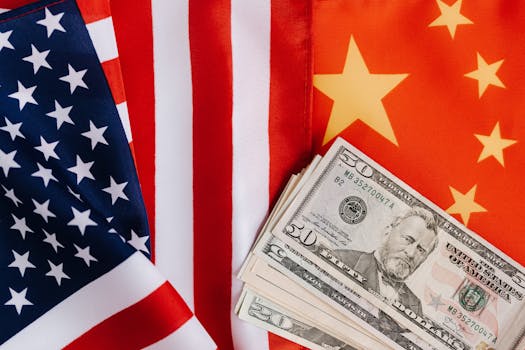+17162654855
+17162654855
DMV Publication News serves as an authoritative platform for delivering the latest industry updates, research insights, and significant developments across various sectors. Our news articles provide a comprehensive view of market trends, key findings, and groundbreaking initiatives, ensuring businesses and professionals stay ahead in a competitive landscape.
The News section on DMV Publication News highlights major industry events such as product launches, market expansions, mergers and acquisitions, financial reports, and strategic collaborations. This dedicated space allows businesses to gain valuable insights into evolving market dynamics, empowering them to make informed decisions.
At DMV Publication News, we cover a diverse range of industries, including Healthcare, Automotive, Utilities, Materials, Chemicals, Energy, Telecommunications, Technology, Financials, and Consumer Goods. Our mission is to ensure that professionals across these sectors have access to high-quality, data-driven news that shapes their industry’s future.
By featuring key industry updates and expert insights, DMV Publication News enhances brand visibility, credibility, and engagement for businesses worldwide. Whether it's the latest technological breakthrough or emerging market opportunities, our platform serves as a bridge between industry leaders, stakeholders, and decision-makers.
Stay informed with DMV Publication News – your trusted source for impactful industry news.
Energy

**
The US dollar's reign as the world's reserve currency is undeniable. For decades, it has been the bedrock of global finance, facilitating international trade, investment, and debt. But this dominance, while benefiting the United States immensely, is also raising concerns about its sustainability and the potential consequences of its waning influence. This article will delve into the multifaceted role of the US dollar in the global economy, exploring both its strengths and its vulnerabilities in the face of rising geopolitical tensions and economic shifts.
The US dollar's global dominance isn't accidental; it's built upon several key pillars:
Deep and Liquid Markets: The US boasts the largest and most liquid financial markets globally. This facilitates easy conversion and trading of the dollar, making it attractive for international transactions. The sheer volume of trading ensures minimal price fluctuations, providing stability for businesses and investors.
Safe Haven Asset: During times of economic uncertainty or geopolitical instability, investors flock to the dollar as a safe haven asset. Its perceived stability and the strength of the US economy make it a reliable store of value, driving demand even higher. This "flight to safety" phenomenon further solidifies the dollar's position.
Petrodollar System: While its influence is decreasing, the historical linkage between oil prices and the US dollar remains significant. A large portion of global oil transactions are still conducted in USD, creating a persistent demand for the currency. This system, though challenged by emerging economies diversifying energy sources and trading arrangements, continues to contribute to dollar demand.
Global Debt Denominated in USD: A significant portion of global debt is denominated in US dollars. This creates a continuous need for the currency, as countries and corporations require dollars to service their debt obligations. This dependence reinforces the dollar's central role in international finance.
Despite its enduring strength, several factors are challenging the US dollar's hegemony:
The emergence of alternative reserve currencies, such as the Euro and the Chinese Yuan (RMB), is gradually eroding the dollar's dominance. The Euro, despite its recent struggles, remains a strong contender, backed by the economic strength of the Eurozone. The Chinese Yuan, while still subject to significant capital controls, is steadily gaining traction in international trade, particularly within the Asia-Pacific region. This diversification of reserve currencies weakens the dollar's unique position.
The increasing use of sanctions by the US, often involving the freezing of dollar-denominated assets, is fueling resentment and prompting other nations to explore alternatives. This has accelerated the search for de-dollarization strategies, pushing countries to develop alternative payment systems and reduce their reliance on the US dollar. The BRICS nations (Brazil, Russia, India, China, and South Africa) are actively pursuing such initiatives, further challenging the dollar's dominance.
The substantial US national debt and persistent inflationary pressures are raising concerns about the long-term stability of the dollar. High inflation erodes the purchasing power of the currency, potentially reducing its attractiveness as a store of value. The massive national debt also raises questions about the US government's ability to manage its fiscal responsibilities, impacting investor confidence.
The rapid advancement of technology, especially in the realm of cryptocurrency and blockchain, presents a potential long-term challenge to the dollar's hegemony. Decentralized digital currencies could offer an alternative to traditional fiat currencies, potentially reducing the reliance on centralized banking systems and the US dollar's central role within them. This remains a longer-term threat but one with increasing potential.
The future of the US dollar's global dominance isn't a binary outcome; it's more likely a gradual shift towards a multipolar currency system. While the dollar is unlikely to disappear overnight, its share of global reserves and transactions is expected to decline over time. This transition will have profound implications for the global economy, impacting international trade, investment flows, and geopolitical dynamics.
A reduced role for the US dollar could:
Reduce US Influence: A less dominant dollar could weaken the US's ability to exert economic and political influence globally.
Increase Global Financial Volatility: A more fragmented currency system could lead to increased volatility in exchange rates and potentially destabilize global financial markets.
Boost Other Economies: The rise of alternative currencies could benefit the economies of countries whose currencies gain prominence.
Demand for Alternative Payment Systems: The push for de-dollarization will increase the demand for alternative payment systems independent of the SWIFT network (Society for Worldwide Interbank Financial Telecommunication).
In conclusion, the global role of the US dollar is a complex and constantly evolving landscape. While the dollar maintains its dominance for the foreseeable future, several factors are subtly, yet significantly, eroding its unparalleled position. The long-term future will likely see a less centralized, more multipolar currency system, presenting both opportunities and challenges for nations across the globe. Understanding these dynamics is crucial for navigating the shifting sands of international finance and ensuring economic stability in an increasingly interconnected world.